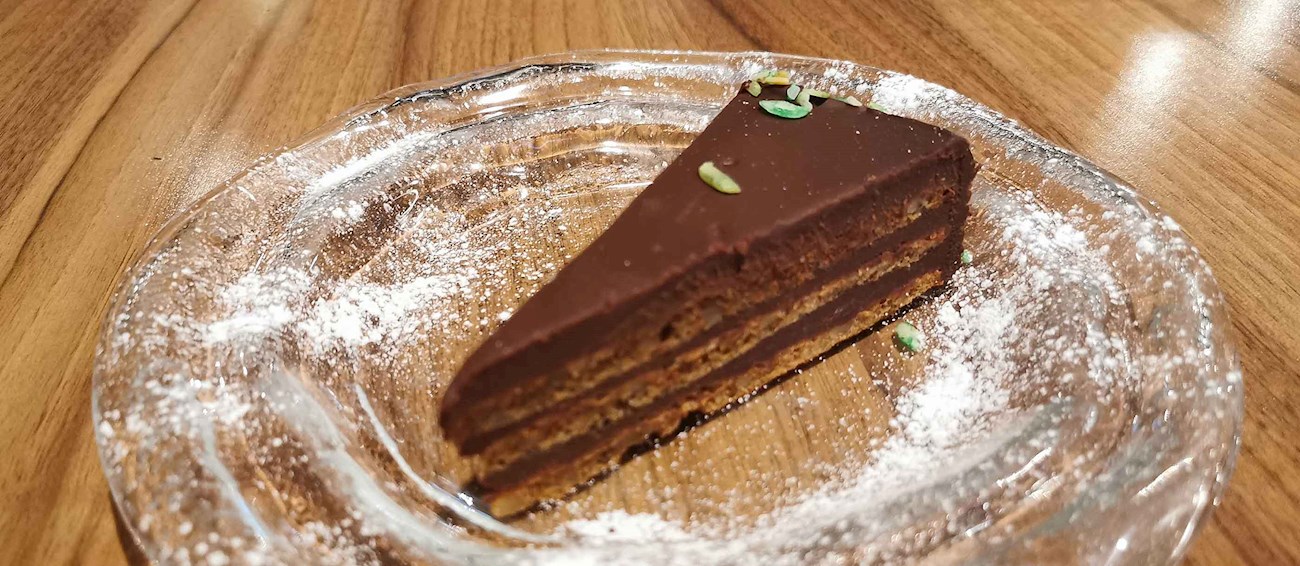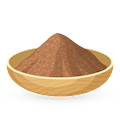MAIN INGREDIENTS
Tikvenik is a traditional pastry consisting of thin sheets of dough that are filled with grated pumpkin, coarsely ground walnuts, sugar, and cinnamon. This pumpkin dessert is a sweet version of banitsa, a phyllo pastry pie that comes in numerous varieties.
When baked, tikvenik is sliced and usually dusted with powdered sugar. Tikvenik is often associated with winter season, and it is commonly served on Christmas Eve, but it can be enjoyed throughout the year, either as a delicious breakfast or a hearty dessert.
MAIN INGREDIENTS
This decadent cake is one of the most popular Bulgarian desserts. It consists of five delicate walnut sponges layered with dark chocolate. The whole cake is then covered in a glistening chocolate icing or creamy ganache, decorated with walnuts, desiccated coconut, sliced almonds, or chocolate ornaments.
The cake was invented by an Austro-Hungarian confectioner Kosta Garash in 1885. At the time, he was working at a lavish hotel in the city of Ruse, where he first served the cake. He later went to Sofia and continued to prepare the cake—which soon became a renowned Bulgarian dessert that is nowadays found on the menus of numerous pâtisseries and restaurants across the country.
MAIN INGREDIENTS
Called rurki or rurki z kremem in Poland, this sweet specialty is a type of cream roll consisting of thin pastry that’s typically filled with whipped cream or pastry cream. It is often dubbed torpedo dessert due to its characteristic shape, and apart from Poland, there’s also a long-standing tradition of preparing this dessert in other countries.
The origins of rurki are often associated with Türkiye and Bulgaria, where the dessert is known as torpil tatlısı and funiiki s krem, respectively. There are many variations of this sweet delicacy regarding the ingredients used for its preparation, the appearance, texture, and flavor of the rolls, and the type of cream used for filling the pastry.
MAIN INGREDIENTS
Kurabiiki is a Bulgarian variety of the popular Middle Eastern cookies known as qurabiya. In Bulgaria, these sweet cookies consisting of butter, honey, egg yolks, sugar, and flour are especially popular during the festive holiday season.
Typically shaped into balls, the cookies are often dipped in coarse sugar before baking. When delicately browned, kurabiiki can be consumed at once or stored in tightly screwed jars and tins for later use, ensuring they remain crunchy and fresh as long as possible.
MAIN INGREDIENTS
Kazanlak donuts are a specialty of the Bulgarian town of Kazanlak – also known as the City of roses. The donuts consist of eggs, flour, yogurt, milk, yeast, salt, sugar, and vanilla flavoring. After the dough has been fried in hot oil, Kazanlak donuts are typically dusted with powdered sugar or topped with honey, jam, or syrup, although they can be consumed without any toppings.
MAIN INGREDIENTS
Traditionally prepared for Christmas Eve in Bulgaria, oshav is a simple dish of stewed dried fruit such as prunes, apples, and pears. The dried fruits should be washed, placed in a pot with water, then boiled until they soften. When they are soft, sugar or honey and spices such as cloves and cinnamon are added to the pot in order to enhance the flavors.
It is recommended to serve oshav cold.
MAIN INGREDIENTS
Marudnik is a specialty of the Bulgarian region of Rhodope mountains. It looks similar to a pancake and consists of flour, baking soda, salt, butter, eggs, and the Bulgarian staple – yogurt. Marudnik is traditionally baked on a tikla – a hot, flat stone.
It is typically consumed as a last course after a big meal, and it is most often served with wild berries preserve.
TasteAtlas food rankings are based on the ratings of the TasteAtlas audience, with a series of mechanisms that recognize real users and that ignore bot, nationalist or local patriotic ratings, and give additional value to the ratings of users that the system recognizes as knowledgeable. TasteAtlas Rankings should not be seen as the final global conclusion about food. Their purpose is to promote excellent local foods, instill pride in traditional dishes, and arouse curiosity about dishes you haven’t tried.











